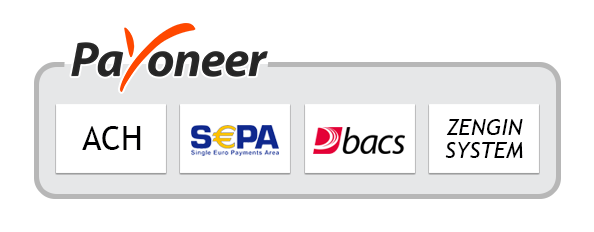Table of Contents
Introduction
New York, NY – February 07, 2025 – The global Mead Beverage Market is witnessing significant growth, with the market size projected to reach approximately USD 1,774.8 million by 2033, up from USD 642.2 million in 2023. This growth is driven by a robust CAGR of 10.7% during the forecast period from 2024 to 2033.
Mead, often referred to as honey wine, is gaining popularity due to its unique taste profile and rising consumer interest in craft beverages. The growing trend of alcoholic beverages with natural ingredients, including honey, is expected to further boost demand. In addition, mead’s increasing presence in social gatherings and celebrations is contributing to its market expansion.
The market is seeing an influx of new varieties and flavors, enhancing its appeal among diverse consumer segments. Furthermore, the expansion of mead production facilities in regions such as North America and Europe presents significant opportunities for growth. As consumer preferences shift towards artisanal and distinctive drinks, the Mead Beverage Market stands to benefit from the growing demand for alternative alcoholic beverages, providing businesses with opportunities to tap into new markets and customer bases.

Key Takeaways
- Mead Beverage Market size is expected to be worth around USD 1774.8 Mn by 2033, from USD 642.2 Mn in 2023, growing at a CAGR of 10.7%.
- Traditional Mead held a dominant market position, capturing more than a 41.3% share.
- Bottles held a dominant market position in the mead beverage market, capturing more than a 73.3% share.
- Supermarkets/Hypermarkets held a dominant market position in the mead beverage market, capturing more than a 46.4% share.
- North America, the mead market is the most dominant, accounting for 36.3% of the global market, valued at USD 232.4 million.
Report Scope
| Market Value (2024) | USD 642.2 Million |
| Forecast Revenue (2034) | USD 1774.8 Million |
| CAGR (2025-2034) | 10.7% |
| Segments Covered | By Type (Traditional mead, Spice mead, Fruit mead, Sparkling mead, Others), By Packaging Type (Bottles, Can, Others), By Distribution Channel (Supermarkets/Hypermarkets, Specialty Stores, Online Sales Channels, Others) |
| Competitive Landscape | B Nektar, Bored Beverages Company, Bunratty, BUNRATTY MEAD AND LIQUEUR CO. Ltd., Charm City Meadworks, Heidrun Meadery, Kuhnhenn Mead, Meadery of the Rockies, Moonlight Meadery, Nectar Creek, Nektarmeadery, PASIEKA JAROS, Pasiekajaros, Redstone Meadery, Redstone Meadery, Schramm’s Mead, Superstition Meadery, Tallgrass Mead, Wild Blossom Meadery |
Emerging Trends
- Craft Mead Popularity: The craft beverage trend is driving a surge in Mead’s popularity. As consumers seek unique and artisanal drinks, craft mead breweries are emerging, offering small-batch, innovative meads with diverse flavors, such as fruit-infused and spiced varieties, attracting a wider audience.
- Health-Conscious Choices: As consumers become more health-conscious, mead is being marketed as a more natural alcoholic option. Many meads are made from organic ingredients, such as honey, and are considered lower in sugar than other alcoholic beverages, aligning with trends in clean-label products and wellness-focused drinking.
- Flavored Mead Variants: The demand for flavored meads is growing rapidly. Brewers are experimenting with various fruit, spice, and herb infusions to create unique flavor profiles, offering something different from traditional beers, wines, and spirits. This trend helps attract a broader consumer base, especially among younger demographics.
- Increased Availability in Mainstream Markets: Mead’s availability is expanding, with more major retailers and online platforms adding mead to their offerings. This growing accessibility is helping Mead reach a larger consumer base beyond niche markets, increasing its mainstream appeal and potential for broader consumption.
- Sustainability in Production: The push for sustainability in production is another emerging trend. Many mead makers are adopting eco-friendly practices, such as using sustainably sourced honey and reducing carbon footprints. Consumers are drawn to these brands for their environmental responsibility, reflecting a larger shift toward sustainable consumption.
Use Cases
- Social Gatherings and Celebrations: Mead is increasingly popular at weddings, parties, and other celebrations. Its unique flavor and rich history make it an exciting option for those looking to serve something different from traditional wines or beers. Mead’s versatility allows it to complement a wide range of foods and add a special touch to any occasion.
- Craft Beer Alternatives: As consumers explore alternatives to traditional beer, mead is becoming a popular choice. Many mead varieties offer similar complexity to craft beers but with the distinct, honey-based flavors that set them apart. This makes mead an appealing option for craft beer enthusiasts seeking new and unique alcoholic beverages.
- Health and Wellness Drinks: Given its natural ingredients and lower sugar content compared to other alcoholic drinks, mead is gaining traction among health-conscious consumers. It is often marketed as a cleaner, more natural alternative to sugary cocktails, attracting those looking for a drink with fewer additives and preservatives while still enjoying an alcoholic beverage.
- Food Pairing: Mead is becoming more popular in gourmet food pairing. Its wide variety of flavors, from sweet to dry, makes it a great match for a variety of dishes, from spicy foods to cheeses and desserts. High-end restaurants and chefs are starting to feature mead as part of curated dining experiences.
- Gift Market: Mead is becoming a popular gift item, especially in the form of artisanal or craft meads. Its unique appeal, historical significance, and variety of flavors make it an attractive gift for wine and spirit enthusiasts. The growing availability of mead in attractive packaging boosts its desirability in the gift market.
Major Challenges
- Limited Consumer Awareness: Despite its growing popularity, many consumers are still unfamiliar with mead. This lack of awareness limits its broader adoption in the alcoholic beverage market. Educating consumers about mead’s taste, production process, and versatility is a key challenge for producers looking to expand their customer base.
- High Production Costs: The production of mead can be more expensive than other alcoholic beverages due to the cost of quality honey and specialized brewing processes. These higher production costs can make it difficult for smaller mead producers to compete with established beer and wine brands, limiting their market reach.
- Regulatory Barriers: Mead producers face regulatory challenges in different regions, including alcohol taxes, labeling requirements, and distribution restrictions. These regulations can slow market entry and hinder growth for mead brands, especially in emerging markets where alcoholic beverage laws are still evolving.
- Seasonality of Ingredients: Since mead is primarily made from honey, which is a seasonal product, fluctuations in honey supply and quality can affect production consistency. This seasonality can lead to supply chain challenges, potentially resulting in price volatility and inconsistent product offerings, which may affect customer satisfaction.
- Competition from Other Beverages: Mead faces stiff competition from other alcoholic beverages, particularly beer, wine, and spirits, which have a larger consumer base and more established market presence. Convincing consumers to choose mead over these traditional options remains a significant challenge, especially in markets with entrenched drinking cultures.
Market Growth Opportunities
- Expansion into New Markets: As mead becomes more popular, there are significant opportunities to expand into untapped markets, especially in regions like Asia and South America, where craft beverages and unique alcoholic drinks are gaining traction. This provides mead producers with a chance to introduce their products to new consumer bases and increase brand visibility globally.
- Innovation in Flavor Offerings: The growing trend of flavored meads presents an opportunity for producers to experiment with new, creative flavors. Incorporating tropical fruits, spices, or herbs into mead can cater to evolving consumer tastes and attract adventurous drinkers, especially in the growing craft beverage segment.
- Online Sales Channels: E-commerce is increasingly important in the alcoholic beverage market. Mead producers can tap into this growing trend by selling their products directly to consumers online. Expanding into digital sales platforms enables brands to reach a wider audience and boost sales, especially in markets where physical retail presence is limited.
- Sustainability and Eco-Friendly Products: Consumers are increasingly looking for sustainable and eco-friendly products. Mead producers that focus on environmentally conscious production, such as using organic honey or eco-friendly packaging, have a strong growth opportunity to attract eco-conscious customers and stand out in the competitive beverage market.
- Mead as a Cocktail Ingredient: With the rising popularity of craft cocktails, mead has an opportunity to carve out a niche as a unique cocktail ingredient. Offering mead-based cocktail recipes or collaborating with bars and restaurants to feature mead can drive new consumption patterns, appealing to both mixologists and cocktail enthusiasts.
Recent Developments
1. B Nektar
- Recent Developments:
- Innovation: B Nektar has continued to innovate in the mead sector by introducing new flavors and limited-edition meads. In 2023, they launched a line of session meads with lower alcohol content, targeting health-conscious consumers and expanding their market reach.
- Partnerships: In 2022, B Nektar partnered with local breweries and cideries to create hybrid beverages, combining mead with beer and cider. This collaboration has helped them tap into new customer segments.
- Contributions: B Nektar has been a pioneer in modernizing mead, making it more accessible to younger consumers through creative branding and innovative product lines.
2. Bored Beverages Company
- Recent Developments:
- Innovation: Bored Beverages Company has focused on creating ready-to-drink (RTD) mead-based cocktails, catering to the growing demand for convenient alcoholic beverages. In 2023, they introduced a canned mead cocktail line, which has gained popularity in the RTD market.
- Investments: The company secured a significant investment in late 2022 to expand its production capacity and distribution network, particularly in the U.S. and Canada.
- Contributions: By introducing mead-based RTD cocktails, Bored Beverages has helped bridge the gap between traditional mead and modern consumer preferences.
3. Bunratty
- Recent Developments:
- Innovation: Bunratty has focused on premiumizing its mead offerings by using locally sourced honey and traditional recipes. In 2023, they launched a limited-edition aged mead, targeting the luxury beverage market.
- Partnerships: Bunratty partnered with Irish tourism boards in 2022 to promote mead as part of Ireland’s cultural heritage, boosting its visibility in international markets.
- Contributions: Bunratty has played a key role in preserving traditional mead-making techniques while adapting to modern market trends.
4. BUNRATTY MEAD AND LIQUEUR CO. Ltd.
- Recent Developments:
- Innovation: The company has expanded its product line to include mead-based liqueurs, combining traditional mead with modern flavors. In 2023, they introduced a honey and spice liqueur, which has been well-received in European markets.
- Acquisitions: In 2022, Bunratty Mead and Liqueur Co. acquired a small craft distillery in Ireland to diversify its product portfolio and enhance its production capabilities.
- Contributions: The company has contributed to the mead sector by blending traditional Irish mead with contemporary liqueur trends, appealing to a broader audience.
5. Charm City Meadworks
- Recent Developments:
- Innovation: Charm City Meadworks has been experimenting with barrel-aged meads, introducing complex flavors, and attracting craft beverage enthusiasts. In 2023, they released a limited-edition bourbon barrel-aged mead.
- Partnerships: The company partnered with local restaurants and bars in Maryland in 2022 to create exclusive mead pairings, enhancing the dining experience and promoting mead as a versatile beverage.
- Contributions: Charm City Meadworks has been instrumental in promoting mead as a craft beverage, emphasizing local sourcing and sustainability.
Conclusion
The Mead Beverage market is experiencing a promising period of growth, driven by increasing consumer interest in unique, artisanal drinks and the rising popularity of craft beverages. With its rich history, diverse flavor offerings, and appeal to health-conscious individuals, mead is positioned to carve out a larger share of the global alcoholic beverage market. As new production techniques, innovative flavors, and sustainability practices continue to emerge, the expansion opportunities are vast, particularly in new markets and within the growing trend of premium alcoholic beverages. However, challenges such as limited awareness, high production costs, and competition from established alcohol categories remain. By addressing these hurdles and capitalizing on evolving consumer preferences, mead has the potential to become a significant player in the global beverage landscape.
Discuss Your Needs With Our Analyst
Please share your requirements with more details so our analyst can check if they can solve your problem(s)





